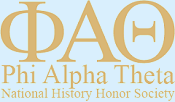Final Manuscript Preparation Guidelines for Tenor of Our Times
Submission Guidelines
The follow style guides will be followed in the publication and editorial process for Tenor of Our Times. We look forward to reviewing any historical submission by current and former students that meet these guidelines. If you have any questions, please email us at tenortimes@harding.edu.
1. All submissions -- essays, primary source analysis, book reviews, film reviews, and historical exhibit reviews must be submitted electronically at https://scholarworks.harding.edu/cgi/submit.cgi?context=tenor.
a. You must create an account on the Scholar Works at Harding site to submit your work.
3. All submissions should be 10-35 pages long, excepting book/film/exhibit reviews, which should be 4-10 pages in length. Submissions are due by 11:59 pm on January 31.
a. File-names of the e-copy must have the short title of the essay. Example: Opium_Wars.docx
b. All e-copies must be in Microsoft Word format.
c. You will receive a confirmation email after your submission is received.
4. Fonts and Margins
a. All papers must have 1 inch or smaller margins on all sides.
b. Font size must be 12 point Times New Roman font and footnotes in 10 point Times New Roman font.
c. Students are encouraged to include relevant charts, images, and illustrations of high quality.
5. The first page of the paper should have the title in all capital letters at the top of the page. Do not include a title page.
a. This is a double blind process. Do NOT put your name anywhere on the paper. Authors and editors will not be identified until publication.
b. Do not include a name in the header or footer of the paper with the page number.
6. All papers must use the Chicago Manual of Styles, 16th edition (Two copies are available in Ganus 125 and others are in the Brackett Library).
a. You may submit your paper in any citation format. However, if it is accepted for publication, the author must change it to Turabian/ Chicago formatting for publication.
b. Footnotes are required in the final edit. Footnote numbers come after the period (or other relevant punctuation such as quotation marks) at the end of the sentence.
7. All articles should include a bibliography of all sources used.
8. Authors will be notified of their acceptance/rejection for the journal by mid-March.
a. Authors must make all editorial changes required by the editors & editorial boards to be eligible for publication.
Additional Requirements
Indenting, Line Spacing, and Justification
Indent all paragraphs except those following a section heading. An indent should be one half inch (or the default tab spacing in Word).
Do not insert extra space between paragraphs of text with the exception of long quotations, theorems, propositions, special remarks, etc. These should be set off from the surrounding text by additional space above and below.
Don't "widow" or "orphan" text (i.e., ending a page with the first line of a paragraph or beginning a page with the last line of a paragraph).
All text should be left-justified (i.e., flush with the left margin—except where indented).
Colored text
Set the font color to black for all of the text. Colors other than black are not allowed.
Please ensure that there are no colored mark-ups or comments in the final version, unless they are meant to be part of the final text. (You may need to "accept all changes" in track changes or set your document to "normal" in final markup.)
Emphasized text
Whenever possible use italics to indicate text you wish to emphasize rather than underlining it. The use of color to emphasize text is discouraged.
Foreign terms
Foreign terms should be set in italics rather than underlined. All foreign terms should be defined.
Titles
Whenever possible, titles of books, movies, etc., should be set in italics rather than underlined.
Footnotes
Footnotes should appear at the bottom of the page on which they are referenced rather than at the end of the paper. Footnotes should be in 10 pt. Times or closest comparable font available, they should be single spaced, and there should be a footnote separator rule (line). Footnote numbers or symbols in the text must follow, rather than precede, punctuation. Excessively long footnotes are probably better handled in an appendix. All footnotes should be left and right-justified (i.e., flush with the right margin), unless this creates awkward spacing.
Tables and Figures
To the extent possible, tables and figures should appear in the document near where they are referenced in the text. Large tables or figures should be put on pages by themselves. Avoid the use of overly small type in tables. In no case should tables or figures be in a separate document or file. All tables and figures must fit within 1.5" margins on all sides (top, bottom, left and right) in both portrait and landscape view.
Mathematics
Roman letters used in mathematical expressions as variables should be italicized. Roman letters used as part of multi-letter function names should not be italicized. Whenever possible, subscripts and superscripts should be a smaller font size than the main text.
Short mathematical expressions should be typed inline. Longer expressions should appear as display math. Also expressions using many different levels (e.g., such as the fractions) should be set as display math. Important definitions or concepts can also be set off as display math.
Equations should be numbered sequentially. Whether equation numbers are on the right or left is the choice of the author(s). However, you are expected to be consistent in this.
Symbols and notation in unusual fonts should be avoided. This will not only enhance the clarity of the manuscript, but it will also help insure that it displays correctly on the reader's screen and prints correctly on her printer. When proofing your document under PDF pay particular attention to the rendering of the mathematics, especially symbols and notation drawn from other than standard fonts.
References
Please see the Chicago Manual of Style 16th edition for how to appropriately cite works and create a bibliography. (Two copies are available in Ganus 125 and others are in the Brackett Library.)



